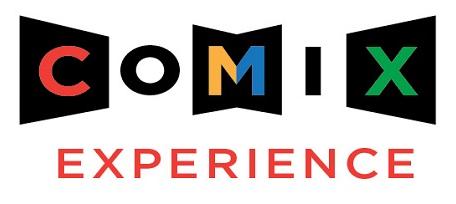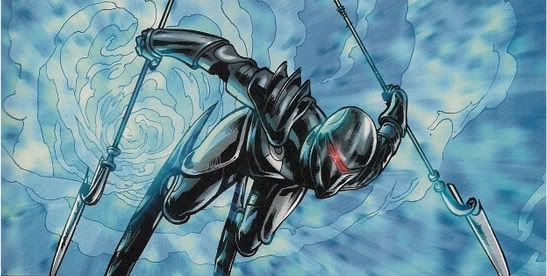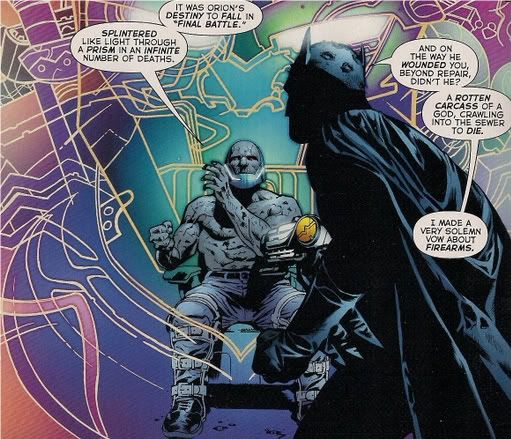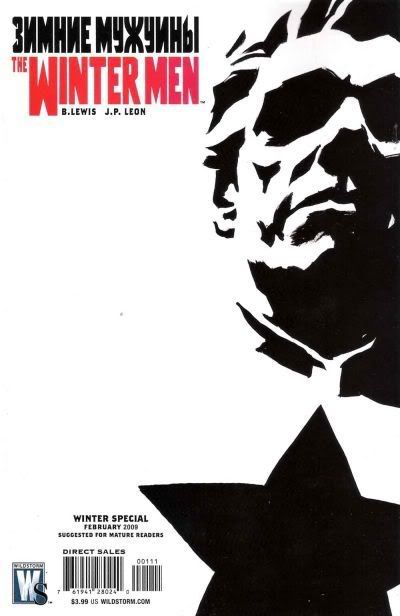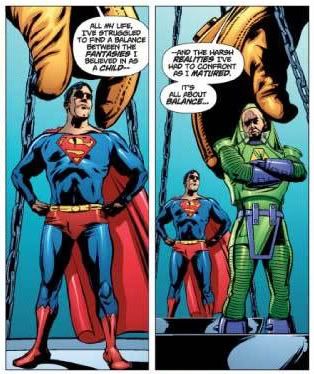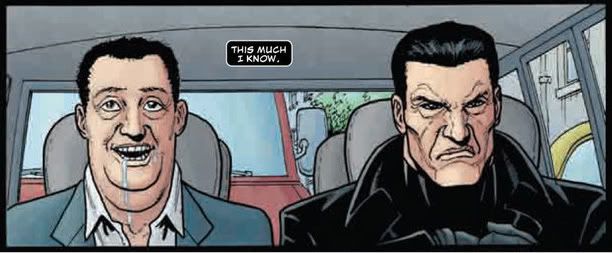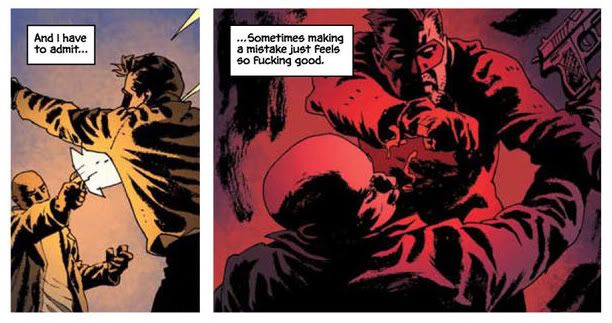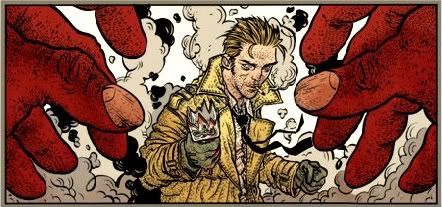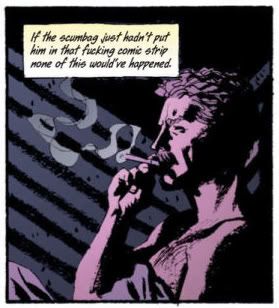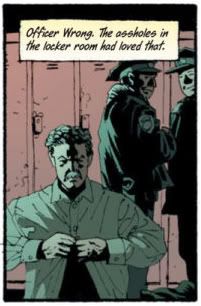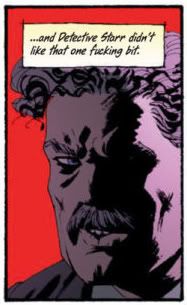I.
Starting in April 2008, the SAVAGE CRITIC website began to bring you a five-part series on the cancellation of BLUE BEETLE. It “technically” hadn’t “happened” yet. “Technically”, BLUE BEETLE was only canceled on November 12th, but...

It wasn't exactly difficult to predict.
And suddenly, last week: our little corner of the internet spasmed. Suddenly: I’m not alone. All sorts of people were asking themselves: “Why didn’t BLUE BEETLE succeed?” And their answers involved things being shoved into asses! I’m not alone, universe! I’m not alone!
So... This one’s going to be extra ramble-y. Sorry.
II.
Before the blog post which received some attention last week, the book’s author, John Rogers posted an earlier statement to his (actually, otherwise quite entertaining) blog, a sort of recap of his intent as the writer of BLUE BEETLE:
We wanted to establish a new superhero for younger readers, and add a different viewpoint to the DCU. Something you could give your 12 year old nephew to read without first forcing him to complete a degree in DC Continuity. A lot of people hated us, then some of them liked us, and then some of them loved us ... while a lot of people still hated us. Those people can go pound sand and collect Final Crisis variant covers.
Let’s begin by seeing if we should go pound sand and collect Final Crisis variant covers. Let’s pound out a single issue of the series, issue #16 of the BLUE BEETLE series. Just so we’re all on the same page as to what it was exactly that got cancelled.
Issue #16 is very near the end of the series (if not the technical final issue of publication). The series’ story concludes in issue 25; it just kept getting published past that point.
So: a rock crawled up young Jamie Reyes’s ass and turned him into the Blue Beetle. In issue #13, Blue Beetle learns that the rock was a device from an alien empire named The Reach. At first, the Reach pretend to be “good guys”, but the book abandons this idea within that issue and reveals that they’re evil immediately, rather than create or maintain any sort of suspense. However, the rest of the world is unaware that the Reach is evil, as the Reach has approached the governments of Earth promising aid & assistance.
A reader might expect this to be a source of tension & conflict in future issues. Nope, not at all: that reader should go pound sand and collect Final Crisis variant covers! Aliens invading Earth-- what’s the logical next thing to happen?

Eclipso opens us up. To the wonders of interpretive dance. FAME, I’M GOING TO LIVE FOREVER-- LIGHT UP THE SKY WITH MY NAME-- FAME! So, for the 12 year old nephews: who is Eclipso?

Dear Joss Whedon, Please go back in time and prevent your own existence, perhaps by seducing your own mother at the Enchantment Under the Sea Dance. Very truly yours, Me After Having Read BLUE BEETLE. P.s. Would Willow make out with me even though she turned all gay at the end? I hope so. XOXOXO.
Say: Who’s that talking and explaining all of this? It’s Blue Beetle’s brand-new romantic interest, Traci 13, introduced to BLUE BEETLE readers for the first time in issue #16.

Things I Don’t Know To This Day: (a) who this character is, (b) who created this character, (c) if this character is featured in any other DC comic, (d) what other characters she hangs out with, (e) who the “Croato—Uh, some detectives” are, and (f) what love feels like.
The issue begins with Eclipso fighting Traci 13, who is wielding the “stolen Staff of Arion”, a reference to a supporting character debuting in 1982 in the series WARLORD. This will be exciting for your 12-year old nephew, provided that your 12-year old nephew was born in 1970.
To help in the fight, Traci 13 recruits Blue Beetle. Together, they discover that Eclipso has strung up members of the Posse like the victims of the aliens in Aliens, using some kind of sadness-goo. Blue Beetle uses his powers to free them from the sadness-goo that’s holding them.
Blue Beetle, Traci 13 and Blue Beetle’s friend Paco then confront Eclipso. Paco saves the baby, and Traci 13 defeats Eclipso. The issue ends with Traci 13 and Blue Beetle holding each other, presumably to start making out once the comic fades to black. Despite the fact that Blue Beetle mentioned vomiting earlier in the issue. As soon as this comic is over, Traci 13 is going to shove her tongue into Blue Beetle’s vomit mouth, and taste the flavor of his upchuck. I think this will be a huge turn-on for your 12 year old nephew, in so far as he’s probably into some pretty weird-ass kinky shit that I’m not even hip to. You know: like, stuff involving boners, basically.
***
What was the story told by issue #16?
You could argue that the story of this issue is “Blue Beetle gets a girlfriend by being heroic.” But the problem with that interpretation: Blue Beetle never acts heroically once in the issue. Not once. The only thing he does the entire issue is defeat some sadness-goo. Which— hell-naw, if wiping away sadness-goo was enough to get you laid, I got a tube sock that’s Wilt Chamberlain. Furthermore, that interpretation ignores page 21. Page 21 needs to be shown in whole…

So, your 12 year old nephew is now supposed to understand that:
1) This is a reference to the DC character, the Elongated Man, a former Justice League member who dates back to 1960.
2) Traci 13 was apparently raised by the Elongated Man and his wife Sue Dibny.
3) Sue Dibny was murdered by Jean Loring, the Silver Age ex-wife of the Atom.
4) Jean Loring became Eclipso in some issue of something sometime, for some reason. I don’t know when or why myself, but that apparently happened.
This issue is all about the character of Traci 13 and her revenge on Jean Loring / Eclipso for the events of 2004’s IDENTITY CRISIS (which your 12 year old nephew would love since it’s wall-to-wall rape and dead pregnant women).
HOW DID THIS COMIC EVER GET CANCELED???
***
Allow me to head off a counter-argument: I didn’t pick a bad issue from the run on purpose, to make my point. I picked an issue involving two ladies having a sexy catfight. I didn’t pick an issue to make BLUE BEETLE look bad-- this was the part of the B-movie montage where Kato Kaelin starts up a bonfire in the background, and Trishelle from Real World: Las Vegas takes off her top, and George Perez and I high-five. It’s all fucking downhill from #16.
***
Here’s the bigger problem--
Two words are never mentioned in the issue: THE REACH.
The bad guys for the entire series.
They’re never mentioned once. Three issues after their introduction.
In any competent work, The Reach would become the focus of what follows. The stakes would escalate, getting the audience to hate The Reach more and more until the book reached its emotional and thematic climax.
Instead:
Issue #15 is a fill-in issue involving a team-up between Blue Beetle and Superman.
Issue #17 involves Blue Beetle fighting Typhoon, the “Soul of the Storm”.
Issue #18 involves the Blue Beetle teaming up with the Teen Titans to fight Lobo.
Issue #19 minimally advances the La Dama subplot.
Issue #20 is a SINESTRO WARS cross-over that features The Reach, but only while it crosses over to another multi-title crossover I haven’t read, and have no intention of reading.
Issue #21 involves the Blue Beetle meeting the Spectre.
The book ignores its own bad guy until the finale, at which point we’re supposed to care about them again. The bad guys don’t spend the second act … being bad guys, doing evil things, antagonizing the hero, any of that.
They flat-out don’t even appear in the comic.
Dude!
III.
The conclusion I draw from the foregoing:
BLUE BEETLE tried to be a simple story about a young boy learning to be a man and to find his place in the world by heroically facing insurmountable odds with the help of his friends and family.
But that isn’t the story they told. The story they told was: a new DC character introduces himself to other DC characters, and finds his place in the DCU.
The audience for that isn’t 12 year old nephews; it’s DC fans, for whom that story served no pressing need or desire or want. And also: BLUE BEETLE?
Look, it’s sort-of a rip-off of INVINCIBLE.
INVINCIBLE is a creator owned series created by Robert Kirkman and Cory Walker that launched in 2003, and is currently published by Image Comics. It’s about an optimistic teenager who gets superpowers and tries to juggle his exciting new life as a superhero, his teenage friends, and family, without losing his upbeat attitude. BLUE BEETLE, on the other hand, is about…

I was at a bookstore the other day; saw this quote by Stephen King in his book ON WRITING (haven’t read the book, but I thought it was a good quote): “People who decide to make a fortune writing like John Grisham or Tom Clancy produce nothing but pale imitations, by and large, because vocabulary is not the same thing as feeling and plot is light-years from the truth as it is understood by the mind and the heart.”
This was a series that didn’t offer anything to people that they couldn’t already get elsewhere, from a product with more acclaim, less baggage, easier to jump onto, more fun to jump onto, with more issues in the can, and … shit: how about a *twist*…? BLUE BEETLE doesn’t have anything resembling a twist anywhere in it; my theory is that a twist would be too upsetting, and the fanboy definition of The “Fun” Comic usually equates to nothing more than hyper-bland inoffensiveness, but… that’s a separate debate perhaps.
Even if you’re not willing to join me on the phrase “rip-off” – look, would you at least agree that BLUE BEETLE was second place? You don’t get points for being second place; comics don’t have a silver medal. Remember any vampire series in comics after 30 DAYS OF NIGHT? How many worthwhile crime comics have had to live in the shitty shadow of shitty-ass SIN CITY? How many other series about cat-people in wheelchairs fucking and sucking can you name besides OMAHA THE CAT DANCER?
The fact the 15,000 people who stuck with it liked it enough to say so on the Internet doesn't make a series "critically acclaimed." Bart Beaty isn't exactly working on a monograph, as far as I know. It just means 15,000 people live near a public library.
They didn’t have anything new to offer. That’s the sadness of comics. The cancellation is just gravity.
IV.
The cancellation isn’t the mystery here. The mystery is this: DC launches failed title after failed title. Off the top of my head, just in 90’s and 00’s: Young Heroes in Love, Damage, Power Company, Chase, Hawk & Dove, Suicide Squad, Major Bummer, Xero, Breach, Bloodhound, Manhunter, Doom Patrol, Primal Force, Lab Rats, Stars and STRIPE, Vext, Aztek, All-New Atom, Harley Quinn, Hourman, Martian Manhunter, and probably many more I don’t remember. Just for the DCU alone.
None of them ever, ever work.
There’s an Einstein quote President-Elect Obama (yay!) is fond of: “Insanity is doing the same thing over and over and expecting different results.”

The mystery is this: Why do they keep doing the same thing that doesn’t work, over and over again? The pertinent question isn’t why was Blue Beetle canceled. The pertinent question is: why did they publish it to begin with? What did they think would happen, in spite of the overwhelming weight of history and experience? Did they think they were doing anything differently from what had failed countless times before? Why would this cancellation be surprising to anyone anywhere?
Does it even look like a publishing scheme to you, or some kind of elaborate sleight-of-hand so Time-Warner-Keebler executives don't ask too many questions? When the executives come to check on how things are going, do you think there's someone at DC whose job it is to yell "They're coming! They're coming! Pretend you're working!"? It looks like an embezzling scheme.
With respect to the cancellation, as has been widely reported, author John Rogers angrily pointed the finger at DC’s publishing strategy, DC’s confused self-identity, “creepy” specialty shops, DC’s offices in Manhattan, DC’s gender confusion, the time DC fondled his balls at summer camp, DC’s gut-flopping fetish, etc. (And don’t forget the rest of us, still busy pounding our sand and collecting our Final Crisis variant covers.)
The standard Comic Creator “It’s Us vs. Them” finger-pointing... uhm: usually, it’s from people who work in comics, talking about series they still write…? Petty-Me found the whole thing extraordinarily strange: an author who didn’t actually write a comic anymore, angry that DC couldn’t find a way to continue to exploit the creative energies of young writers and artists in order to keep his abandoned creation alive, angry despite the fact sales straight-up cratered during his tenure on the title. The fact people quoted that without comment or question? A little strange.
“How dare DC not continue to suck the creativity of young talent to keep a series I created alive after I didn’t want to do anything with it? P.S. I was completely not in any way at fault for simply having written a comic that shed 35,000+ in sales while I was writing it. It’s time to go rogue on the Internet, maverick-style!”
And by young talent, Petty-Me is referring to folks who didn’t get handed their own DC ongoing series on near-zero comic-writing experience, just based on screenwriting credentials, a comic culture obsessed with Hollywood star-fucking, and well-connected friends, and then completely fail to deliver sales. The disinterest in nurturing native talent in favor of fly-by-night screenwriters is not something that’s wrong with comics at all!

But… But that’s all Petty-Me, and Petty-Me's a bit of an idiot sometimes, so... Let's try to find the deeper issues.
V.
I suppose it’s worth noting here the obvious truth that BLUE BEETLE succeeded by the only criteria that matters. It generated a parcel of IP that DC/Time-Warner-Keebler was able to exploit in a cross-media property. On a balance sheet, the rest—you, me, Grandma Midge-- we’re all minutiae.
Some fans question canceling the series once the character won the IP lottery. But: they have books they can sell curious Blue Beetle fans. They have four volumes of BLUE BEETLE trades that they can sell to all the new BLUE BEETLE fans of the world. All that argument amounts to is “they could have had five or six volumes instead of four.” Oh. Oh, well.
And what lucky new fans! Getting to read SINESTRO WAR or IDENTITY CRISIS tie-ins-- fun! Maybe the error wasn’t canceling the book; maybe the error was not insuring that those four books would be able to stand alone. I’ve heard the argument that you can understand the issues without knowing the specifics of the SINESTRO WAR crossover—but I personally think there’s a distance between comprehension and entertainment that argument doesn’t account for. For me, that SINESTRO issue especially was a huge turn off; you could perhaps understand the What of what happened, but not the Why. Reasonable minds could differ on that point, though.
VI.
My eyes glaze over anytime I hear the phrase “mid-list” though. I guess because I always flash on the same image anytime I hear it, the double-page splash from CRISIS OF INFINITE EARTHS #5:

In my head, I always hear “Why are you reading about Batman? Why aren’t you reading about that one speck instead? The little half-doodle George Perez made in the upper left-hand corner is a really great character. You should really read about the red speck next to the blue-green speck on the left hand cluster of specks. You have beautiful hair.”
It drives me a little crazy when people say “Fans don’t want new superheroes.” Because usually the people saying that? That’s not what they’re selling—— they’re just selling new specks. It’s less than surprising that there’s a ceiling on that enterprise.
But a mainstream comic market that’s as harsh as this one to new series. It’s … well, Jesus, it’s something, isn’t it?
Though: to an extent, it doesn’t make me entirely sad. You know, because I read good comics, too, and those are doing pretty decent lately…? I’ve got BERLIN 2: CITIZENS ON PATROL on the coffee table, waiting to be read. I finished the BOTTOMLESS BELLY BUTTON recently—— pleasant book. I’ll end the year reading POPEYE, maybe. It’s often hard not to look at comics and think that the good guys are winning. And if Marvel and DC can’t get their acts together, and end up with failure after failure, well: there is a part of me that takes a certain pleasure in that. I might be very slightly bummed that I don’t get to read THE ORDER anymore, but if Marvel never sustains a new series again? Well: isn’t that satisfying to the part of you that believes in karma? Marvel, DC, these aren’t companies that deserve any love. These were never people to root for.
But…
But the water’s edge isn’t BLUE BEETLE. It’s Image series, Vertigo series, alternative monthlies. It’s the serial format, paper-and-staples comic. It’s a whole era of comics which, however misbegotten, is the one I was raised with, have affection for, want to continue with, etc. Plus: people I hope good things for still work in that system. For a certain kind of creator, whose work falls outside the narrow confines of what’s considered “artistic”, for genre creators, that’s still an important industry for any number of reasons.
I don’t suppose I’m interested in offering any great solutions to the problem here; having no real-world expertise, doesn’t that become absurd quickly? It’s just too premature to say how digital delivery systems are going to play out, and beyond that, any fancy prognostication becomes silly quickly. Until… until you’re the weird guy in the comment section yelling “Why don’t they sell Batman in an anthology like SHONEN JUMP?? They can sell them like they sell SHONEN JUMP in Japan, at newsstands next to stops for the bullet train. Because this country is also riddled with newsstands and bullet trains. The Japanese have the right idea—they like art, they’re fond of underage girls and they hate pubic hair. Me, the Japanese and John Ruskin, we’re all on the same page. Join us on Team Ruskin, DC.” Which—you know, I shouldn’t speak ill of Team Ruskin: I have my own silly little predilections (stand-alone maxi-series, one-shots, CBZ files, ass-to-mouth, etc). But…
But let’s ask: when people talk about a book like BLUE BEETLE failing, isn’t that an inherently different conversation, just by virtue of being a DCU title? Is the BLUE BEETLE conversation nothing more than-- “Why won’t the guy who buys BATMAN, SUPERMAN, X-MEN, SPIDERMAN, etc. also buy this other book? Why aren’t the people we squeeze and squeeze and squeeze for money—why can’t we squeeze some out of them, for this other book instead?” Isn’t that a question with its answer built into it?
There’s an implied belief in all of this that the important metric in the comic transaction should be the quality of the product, instead of the purchaser’s affection for the characters. That superhero fans should read the best superhero comic instead of the one featuring the best superhero. Which—— it's probably a belief I subscribe to myself, or want to, but…
But look where that line of thinking leads: after 22 issues, I can’t tell you what Blue Beetle’s powers were. At all. I can’t tell you what he had to do with beetles. Holy shit, dude: I can’t even tell you why he calls himself THE BLUE BEETLE. The part where he gets his name? They didn’t fucking show it in the comic. Holy shit, y’all!

...?
If you think a superhero comic should have great writing, those decisions don’t seem like the end of the world. But if you think a superhero comic should have a great superhero in it, then I don’t think that decision and many, many others can be justified.
Blue Beetle? He’s just some lame dude in a suit of arbitrariness. Sure. I remember being a kid and tying a blanket around my neck, and saying “this blanket can do various arbitrary things as the situation and context demands; I look forward to getting beat up in grade school.” Sure, sure.
After Alan Moore and SWAMP THING, we say to ourselves, “There are no bad characters; all those characters are just waiting for the right team.” But comics aren’t long on Alan Moore’s, so maybe we should revise that to "There are oodles of bad characters, but sometimes one-in-a-million creators write those characters for the short period of time that they manage to get work done without DC pissing them off enough to quit the company forever.”
(Tangent: I’m loving the part of WATCHING THE WATCHMEN where Dave Gibbons says “Fortunately, there was a greater pressure on us—that of keeping to the publishing schedule. We had given our own timeline to DC (which incidentally, we met), but they had advanced the publication dates for, no doubt, sound business reasons.” Love that part! Neat book.)
VII.
Recent Tradition demands that anyone writing about BLUE BEETLE conclude by demanding that you, the reader, insert things into your own asshole. This is a tradition that I whole-heartedly support.
I recommend inserting the Tristan 2.

The Tristan 2 is waterproof and made of a silicone material, which it’s heat-resistant, nonstick, and easy to clean. According to the Tristan 2 literature, the Tristan 2 was “inspired by fans” who wanted a plug that was bigger, longer and thicker than the paltry Tristan 1. Much like the Wu-Tang, the Tristan 1 is for the babies. You’ll notice that it indeed has a longer neck than the typical teardrop-shaped plug; that means greater staying power.
However, I should note that the Tristan 2 website has the following warning: “This is obviously not a plug for butt beginners.” This is obviously a warning that should be heeded by all of you butt beginners out there. Leave the Tristan 2 to the butt journeymen. There’s no official butt-ocracy that will tell you when you can advance from butt acolyte to butt made-man, but… pretty soon, you too can butt paraphrase Darth “Lord” Vader, and say “Now, the butt student has become the butt master.”
Very good.
